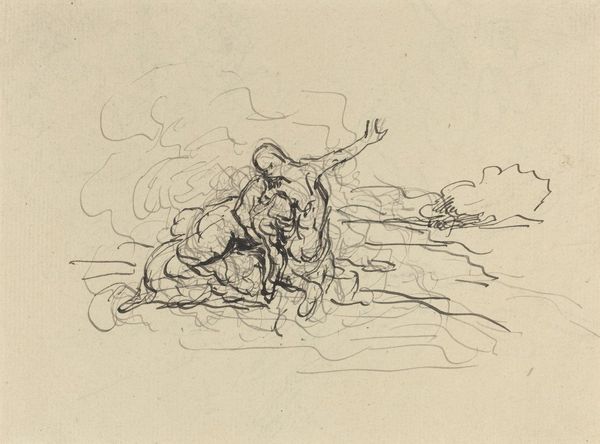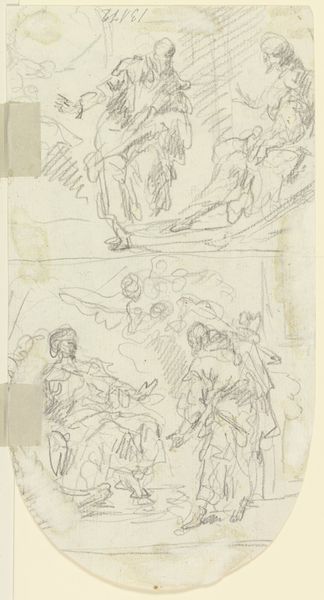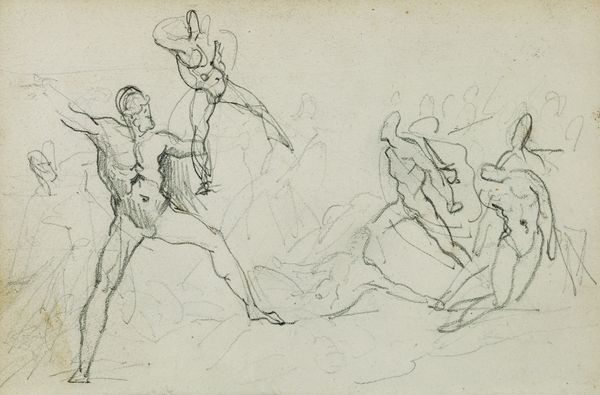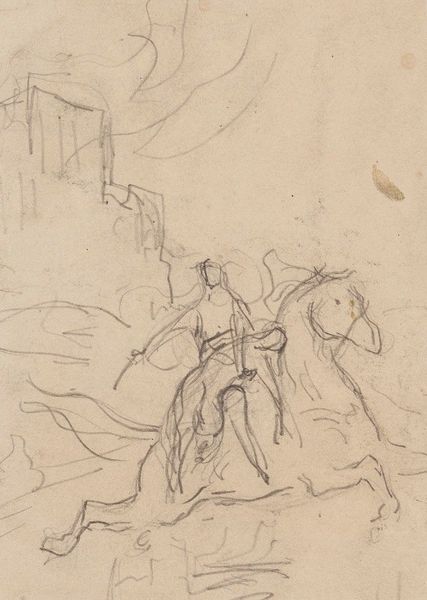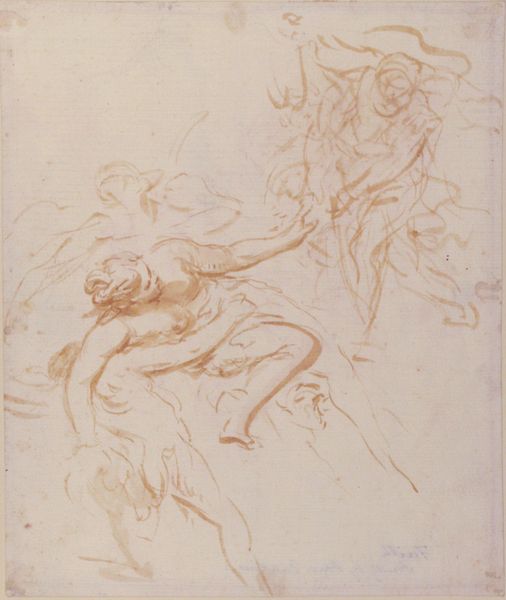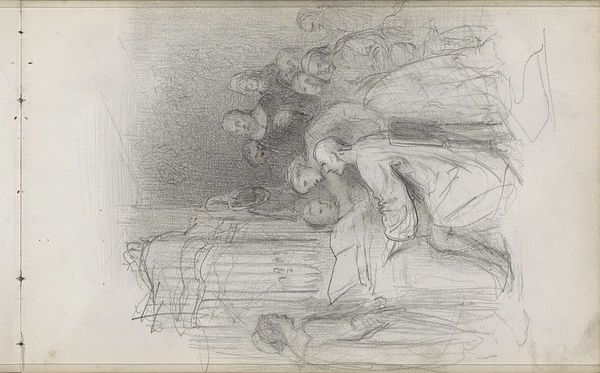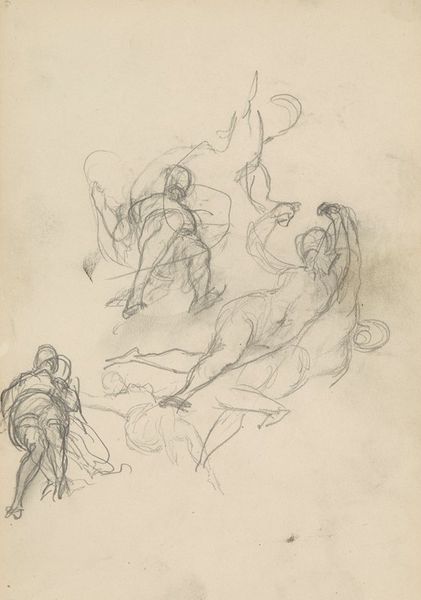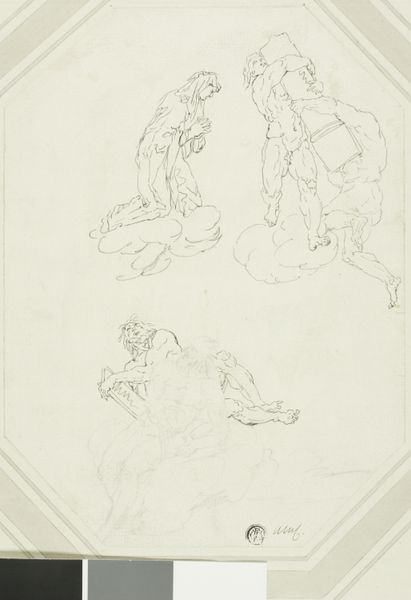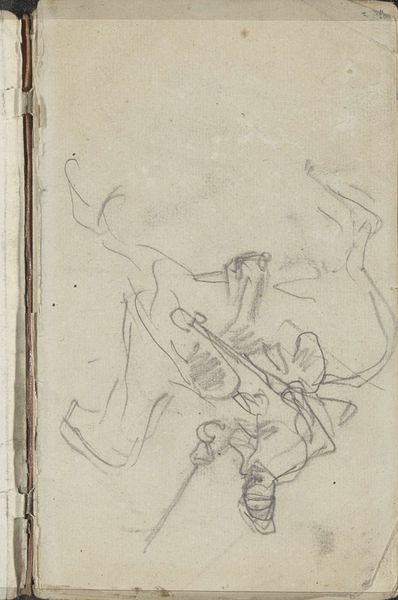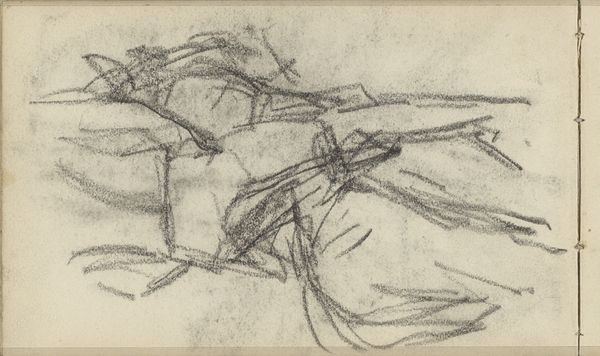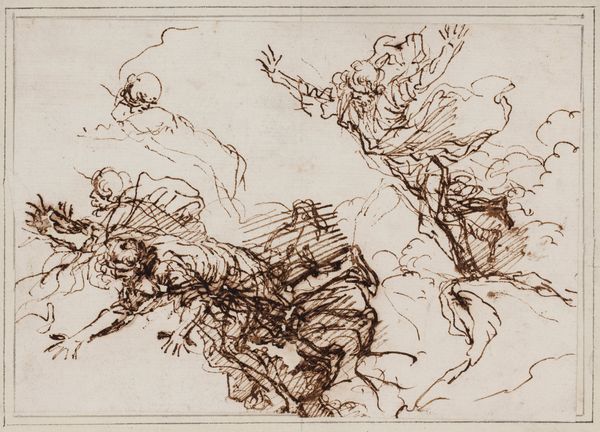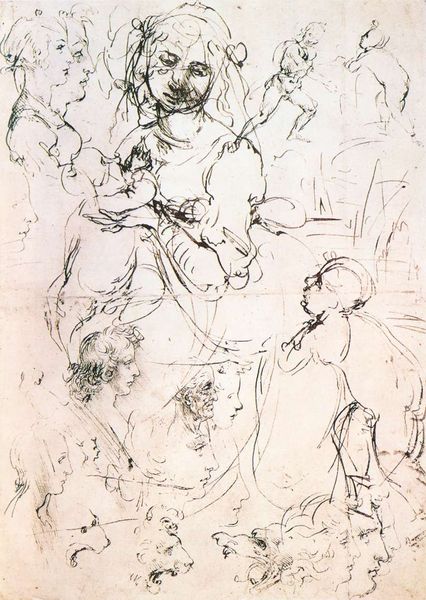
drawing, pencil
#
drawing
#
figuration
#
11_renaissance
#
pencil
#
history-painting
#
italian-renaissance
Dimensions: 17.1 x 15.5 cm
Copyright: Public domain
Editor: This is Michelangelo's "Study for a 'Resurrection of Christ'" from 1533, rendered in pencil. I’m struck by the almost frantic energy in the sketch – you can feel the movement, even though it’s unfinished. What do you see in this piece, especially considering its historical context? Curator: It's vital to examine this drawing through the lens of its materiality and the production processes involved. Michelangelo wasn’t just creating a beautiful image; he was engaging in a physical act. Think about the procurement of the materials - where did the paper and pencil come from, who made them? These may seem like simple tools but the making of them represented labor and industries, touching social and economical issues of the time. Editor: That's a really interesting perspective. I hadn’t considered the origins of the materials themselves, focusing more on Michelangelo’s hand. How does that emphasis on the materiality affect how we view this work in comparison to his finished sculptures or paintings? Curator: By looking at the pencil lines, the paper's texture, we gain a different sense of proximity to the artist’s labor. Unlike the polished marble of a sculpture, this sketch offers raw access to Michelangelo's thought process. What were the social expectations around preparatory studies in the Renaissance workshops? Was this piece meant for circulation within the workshop or considered to be of value outside of that context? Editor: So, you’re saying that the very act of drawing and the visibility of that process becomes part of the artwork's message itself, more so than, say, a fresco. Curator: Precisely. It highlights the labor involved, the means of production, moving beyond traditional notions of genius and into the realm of material culture. Editor: That shifts my perception entirely! I see now how looking at materials and context reveals so much more about the art, about Michelangelo's practice, and the value assigned to these working drawings in the Renaissance workshops. Thanks! Curator: It challenges us to think beyond aesthetic appreciation to appreciate the labor and production, that contributed to the existence of the study.
Comments
No comments
Be the first to comment and join the conversation on the ultimate creative platform.
